Towneley Greyhound Racecourse, Towneley Park, Burnley, Lancashire.
POSTCODE———————————–BB11 3EN
LOCATED————————————-Situated about one mile south east of Burnley town centre just of the A671 in the grounds of Towneley Park.
ORIGINAL SITE——————————Built on grazing land belonging to Redgate Farm.
-DATE CONSTRUCTED——————–1927
DATE VENUE OPENED——————-September 1927.
Meaning other sports may have taken place prior to the arrival of Greyhound Racing.
FIRST MEETING—————————–September 3rd 1927.
Greyhound Racing only.
LICENSED OR INDEPENDENT———–NGRC.
All venues covered would have to be licensed with the government, licensed suggested in this section would refer to tracks operating under NGRC Rules.
INSIDE OR OUTSIDE HARE TYPE——-Outside.
Please note that the Electric Hare suggested is only a guidance and would have been in operation for a certain amount of time at this venue. Although it is not necessarily guaranteed that it was operational all the time, as other types of lure may have been used and updated as time progressed.
DISTANCES———————————-300, 500, 525 and 570 yards.
Please note that most racing venues distances had become varied throughout the years, the ones given above were at once point set and offers only a guidance to the track size.
CIRCUMFERENCE————————–A circumference is difficult to determine due to it operating just two bend races.
Please note that alterations at most racing venues throughout its existence would see that the circumference of the track would vary, the one shown above offers only a guidance to the track size.
BIG RACE NAMES————————–None known of.
STADIUM SHARED WITH—————–Speedway
LAST MEETING——————————November 2nd 1935.
Greyhound Racing only.
STADIUM CLOSURE DATE—————1935
Meaning other sports may have taken place after Greyhound Racing had ceased.
STADIUM DEOLITION———————Left derelict and dwindled away over the years.
BUILT ON SITE——————————Used as a recreation sports field before the northern tip of the golf course covered it in more modern times.
In some cases, structure’s that originally covered the venue after the stadium had been demolished, may have been themselves demolished too, so the one described is more likely to be the one which now presently covers the site.
EVIDENCE LEFT TODAY——————–Nothing known of.
FURTHER COMMENTS———————Although a two bend racecourse it can proudly say that Townele venue was the largest greyhound racing circuit ever operated in the UK.

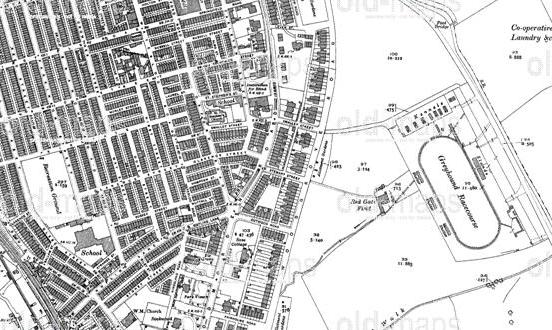
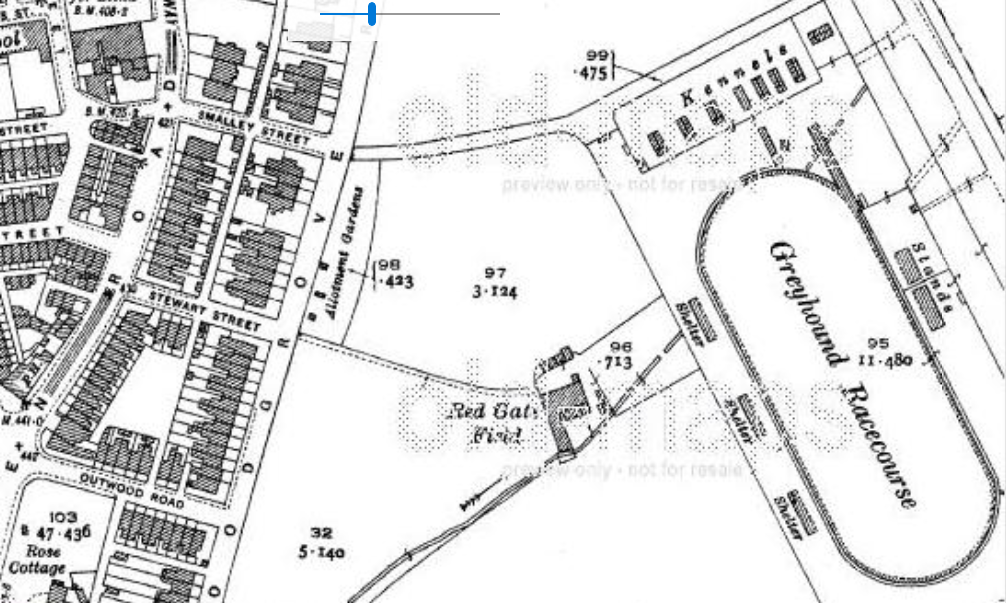
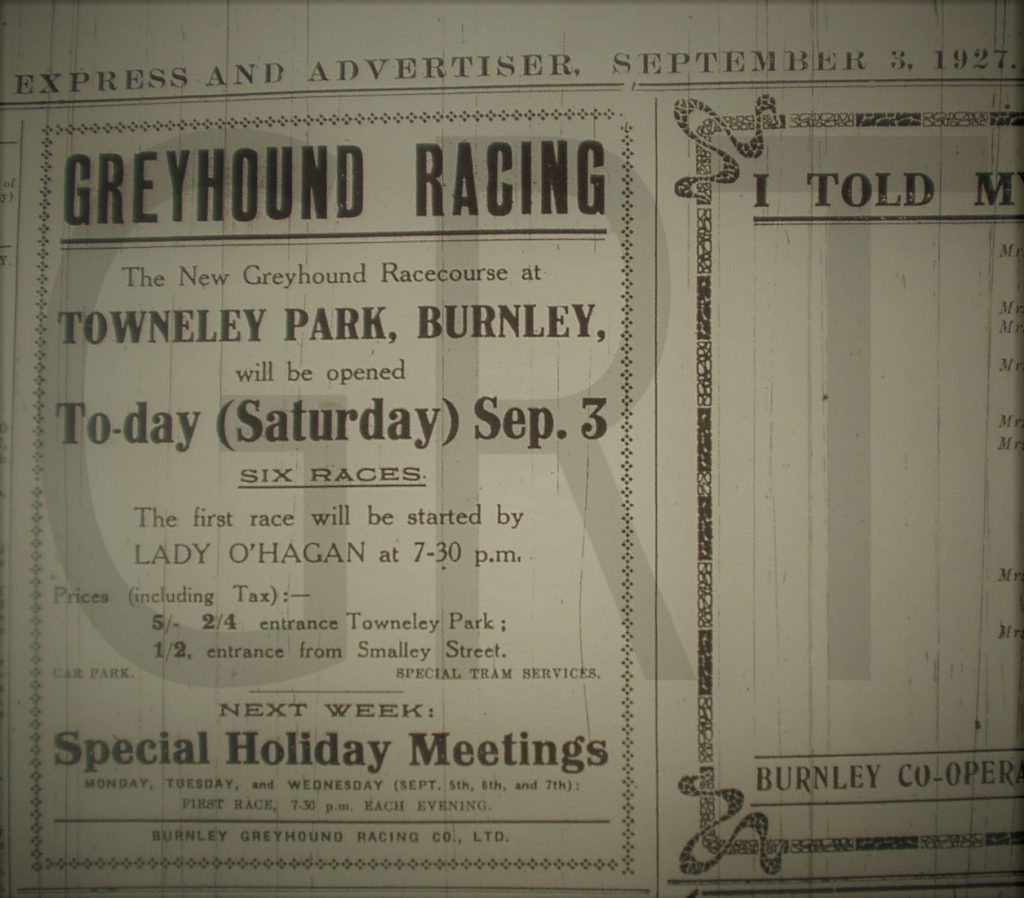



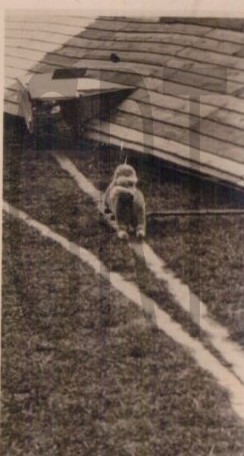







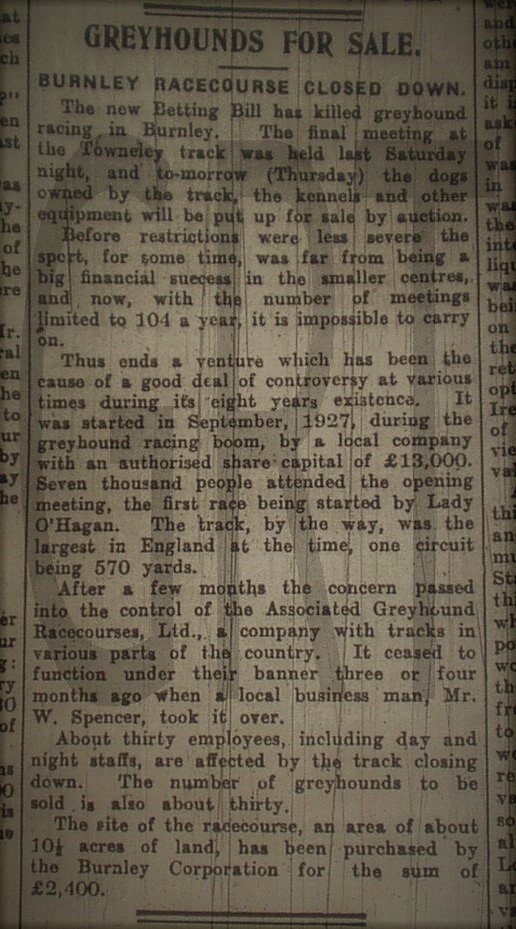

When scouring through the list of greyhound tracks in the north west, it may have come as a surprise to many that a track once operated in the East Lancashire town of Burnley. The track existed throughout an eight year period during the late 1920’s and early thirty’s, and therefore remains unlikely that many will be alive to remember its whereabouts today.
The stadium was located in Towneley Park, a huge section of parkland situated about one mile southwest of Burnley town centre, just off the A671. It was during 1927 that a small greyhound company purchased a ten-and-a-half-acre section of land in Towneley’s grounds at a cost of £20,000. The greyhound stadium was to be built with an agreement that any buildings erected would have to be recognised as a temporary structure, therefore built of timber, such as the main grandstand, the kennels and any other outbuildings that may serve a purpose.
Construction of the stadium began in July 1927, with the first objective of laying a grass circuit, whose 570-yard circumference was at the time, and still remains as the largest greyhound racing circuit ever to have been built in the UK. The outside hare itself became a huge project, firstly by constructing an earth banking all the way round the track, on which lay a steel rail track that would carry a four wheeled bogie. Inside the bogie’s track was an electric power supply that would feed the bogie’s motor by means of brushes, then an arm attached to the bogie would carry the rabbit skin to lure the greyhounds as required. A panoramic manned tower set inside the race circuit, would control the speed of the bogie. But the design of the hare system restricted racing to just two bend affairs with race distances being run over 525 yards.
It seemed from the very start that Towneley Greyhound Stadium had all the ingredients required for a successful track, once the two large grandstands and electric track lighting had been added. Once the stadium structure was complete, the greyhound company purchased the required number of greyhounds that would race and kennel within the boundaries of the stadium. By the Autumn of 1927 the local press advertised that the grand opening would take place on the 3rd of September 1927. A six-race meeting was arranged to be staged during the evening, with Lady O’Hagan, who incidentally lived in Towneley Hall in attendance to start the first race at 7.30pm prompt. The evening had proved a success with almost 7,000 people attending its first meeting.
Yet within five months of the stadiums opening, the venue was sold to the Associated Greyhound Racecourses for £35,000, a company who was totally different from the GRA, and had already opened a handful of greyhound tracks around the UK at the time. The AGR operated under rules very similar to those of the NGRC, with five dog races being run over distances of 297, 500 and 525 yards. But like so many other stadiums at the time, the Burnley venue would see the introduction of dirt track speedway racing, with a cinder circuit being constructed within the infield of the dog track. A huge crowd of 12,000 turned out on the 30th of March 1929, to see speedway feature for the very first time. Unfortunately, the venture was short lived, as poor organisation along with other misfortunes had contributed to its failure, and after just six meetings the bikes had gone.
Greyhound racing continued and it seemed it had found itself a profitable business, with the track promoting as many as five meetings per week with attendances averaging around 350. But the venue was never short of controversy, firstly on the 5th of August 1933, when a large blaze caused extensive damage to the main stand, the judges’ box and the clubhouse, and also a motor vehicle housed beneath the main stand, yet fortunately valuable items were saved by an electrician and kennel hand who were luckily enough still working at the track. Unfortunately, this incident seemed to trigger the demise of the stadium, firstly regarding the rebuilding of the stadium, as the AGR’s plans to construct permanent structures as replacements were upheld by the council.
Other issues such as complaints from nearby residents regarding the constant barking of the 110 greyhounds that were kennelled there. The stench of burning dog waste, and further complaints regarding the unwelcoming gathering of strangers in nearby streets after each race night. With minimal backing from the council, racing continued but a further blow came in 1934, after a new betting legislation reduced the number of meetings per year to just 104, a drastic move which would see the tracks income cut by over a half. These factors contributed to the AGR going out of business during the summer of 1935, which left a temporary management team in charge before it was eventually purchased by the council at a miserable sum of just £2,400.
On the 2nd of November 1935 Towneley greyhound stadium staged its final meeting. After all its valuable assets had been sold off, it then became abandoned, left to the vandals and arsonists to help themselves to what was left. The stadium eventually dwindled into a derelict state and remained a site of just crumbling terracing and weeds for years to come.
Burnley had witnessed greyhound racing for its one and only time with the Towneley venue, although efforts were made in 1946 to build another track at Bentley wood on the outskirts of the town. Sadly, the venture never materialised, as the idea was refused planning permission by the council. In time the old site of the Towneley track disappeared, as the site was levelled and landscaped to be used for recreational purposes for many years after.
In more modern times it became redeveloped once more, this time for an ever-expanding golf course, which today covers the site. When locating the site today, one would travel along the access road that meanders through the grounds towards Towneley Hall, until you reach the golf course on the right. It is here that a cluster of trees bordering the golf course virtually pinpoints the location of the track’s kennels, from then on is where the stadiums site used to be.

Recent Comments